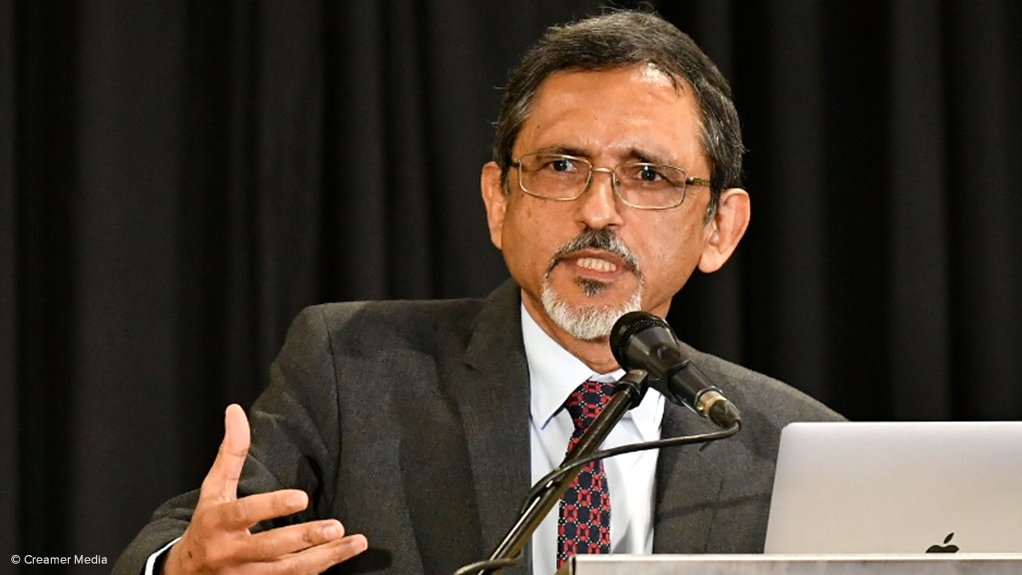The South African government is “confident” of reaching its goal of attracting R1.2-trillion in investment over the five years since launching its yearly South African Investment Conference (SAIC) in 2018, Trade, Industry and Competition Minister Ebrahim Patel has said ahead of this year’s iteration.
The fifth SAIC, and final leg of the five-year investment drive, will take place on April 13, in Sandton, where President Cyril Ramaphosa is hopeful of announcing that government met its investment goals with new multibillion-rand investments into businesses in South Africa.
Since the first investment conference in 2018, South Africa has attracted R1.14-trillion in commitments, representing 95% of its initial target.
In 2022, Ramaphosa announced through the fourth SAIC that the year brought with it R367-billion in investment commitments.
Going forward, Patel says government is evaluating the challenges that it has experienced and will plot the path for investment growth and opportunities over the next five years.
“Part of what has been the success around the investment conferences, and the pledges that we have been able to achieve, is the opportunities in the domestic market.
“Looking forward over the next number of years, there will be a whole new opportunity that will arise from the African Continental Free Trade Area (AfCFTA). It is going to significantly open up new markets to products from South Africa's industrial base.
“It will also give opportunity for critical services – finance, legal retailing and others to expand in other markets elsewhere on the continent,” he says.
In the next phase of attracting investments into South Africa, Patel says the South African government will try to coordinate actively the role and the actions of private investors.
He adds that many new opportunities, as well as challenges will arise as the AfCFTA comes into effect and African communities start working more closely together.
“In the period ahead, [we] will not only set a new target, but also see how we can achieve a greater focus on unlocking opportunities elsewhere on the African market.
“This is an opportunity for South African investors, but it is also for foreign investors that are able to leverage off the existing plant and equipment in South Africa and those who want to settle in a jurisdiction with rule of law and a judiciary that is fiercely independent,” states Patel.
He points out that although 77 previously committed investments are currently under construction, another 26 projects are progressing slowly, largely owing to economic factors.
“It may be changes in market demand compared to projections at the time.”
Nonetheless, Patel highlights that R450-billion has been expended from the pledges that have been made in the five-year timeframe.
By way of example, Patel highlights a R1.2-billion investment by automotive original-equipment manufacturer (OEM) Isuzu to grow its business in South Africa and take ownership of an existing automotive plant in the Eastern Cape.
“We worked with Isuzu . . . they took over the plant . . . and they have now expanded the production lines,” he says.
Patel adds that on April 7, 2022, Ramaphosa launched Isuzu’s new D-Max bakkie, having freshly rolled off the production line of the Isuzu factory in the Eastern Cape.
“This investment of R1.2-billion supports direct employment of 1 000 workers.
“The investment itself will have a consolidated value add of R2.8-billion through the lifecycle of the bakkie production.
“Isuzu now exports [its D-Max] to 24 countries, and there has been an increase in the output of the plant. We now have 110 units produced per single shift, and [Isuzu] expects to increase production over the next couple of years,” he enthuses.
Patel further points to automotive OEM Ford’s previous investment pledges that have resulted, over the past few months, in several automotive component suppliers and manufacturers establishing businesses in close proximity to Ford’s Silverton plant.
“Ten factories have opened and are providing some components [for] Ford’s [locally-made] Ranger vehicle,” he says.
The SAICs have been “very helpful in spotlighting” the importance of investment to South Africa’s growth ambitions, says Patel.
“In a number of cases, the [SAICs] have highlighted challenges, challenges that we face, either at local government level, or [as a result of poor] infrastructure,” he says, adding that government has been able to find solutions to these problems as a result of becoming aware of them.
“As we get more of the renewable energy roll-out, we are going to see also a boost in the output in the investment plans that have been [developed] to date,” concludes Patel.
EMAIL THIS ARTICLE SAVE THIS ARTICLE ARTICLE ENQUIRY
To subscribe email subscriptions@creamermedia.co.za or click here
To advertise email advertising@creamermedia.co.za or click here











